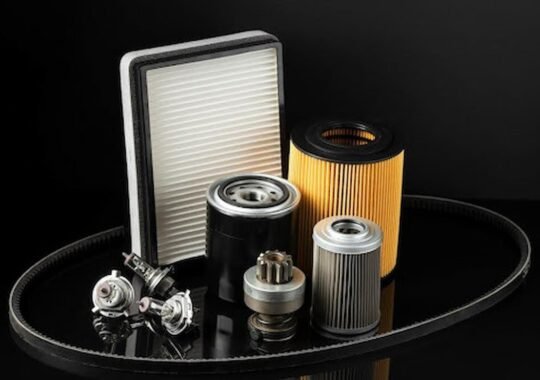Table of Contents
- The Importance of Post-Collision Checks
- Choosing the Right Repair Shop
- Understanding Collision Damage
- Major vs. Minor Repairs
- Why Certified Technicians Matter
- Conducting a Post-Repair Inspection
- Maintaining Vehicle Safety: Guidelines Moving Forward
- Frequently Asked Questions
The Importance of Post-Collision Checks
After experiencing a car accident, the priority is to ensure everything is alright with you and the passengers. However, once personal safety is established, attention must shift to the vehicle’s condition. Post-collision checks are crucial because damage can extend beyond what is visible to the naked eye. For instance, a slight dent might signify deeper structural issues affecting steering alignment or suspension integrity, which could compromise vehicle safety over time.
Another critical aspect of post-accident inspection is body repair. This involves addressing cosmetic damage and scrutinizing the vehicle’s structural components thoroughly. Identifying and rectifying seemingly minor issues is essential; if left unaddressed, they might lead to more significant hazards.
Choosing the Right Repair Shop
Finding a reputable auto body repair shop is essential for maintaining your vehicle’s integrity after a collision. When searching for a shop, consider several factors, including expertise and certifications, to ensure high-quality repairs. The ideal shop should have positive customer reviews and hold relevant industry certifications. These indicators suggest that the facility adheres to high standards of excellence.
Moreover, establish transparency—seek a shop that communicates clearly throughout the repair process, from providing a detailed initial assessment to explaining repair choices and the steps involved. An open line of dialogue ensures expectations are met, giving you peace of mind that your vehicle is in adept hands.
Understanding Collision Damage
Many vehicle owners may underestimate the extent of damage incurred in a collision. Visible damage, such as scratches and dents, is only one facet. The hidden damages, such as those affecting the vehicle’s mechanical or electronic systems, are less known but critical. These can impair performance and, more importantly, safety.
For instance, a bruised bumper might disguise underlying sensor malfunctions that could cripple advanced safety systems like collision avoidance technology. Being informed about these hidden aspects of damage is imperative for any vehicle owner. It allows for a proactive approach, ensuring all systems are diagnosed and repaired as needed, thus restoring the vehicle to its safe operational status.
Major vs. Minor Repairs
Recognizing the difference between primary and minor repairs can significantly impact one’s approach to vehicle maintenance following a collision. Major repairs typically involve structural and mechanical elements, requiring significant resources and a longer duration to address effectively. These repairs ensure vehicle parts are aligned with manufacturer specifications, safeguarding their performance and safety features.
Conversely, minor repairs, though often dismissed as superficial, such as fixing a door dent or repainting a scuffed area, should not be overlooked. They contribute to preserving the vehicle’s overall aesthetics and preventing potential depreciation. Hence, discerning repair classification helps manage costs without sacrificing safety and quality standards.
Why Certified Technicians Matter
Entrusting your car to certified technicians can substantially improve repair outcomes. Advanced vehicle technologies require specific knowledge and skill sets only certified individuals possess. Their proficiency ensures that repairs comply with industry and manufacturer standards, crucial for maintaining safety and functionality.
Moreover, certification indicates a technician’s commitment to continuous learning and skill refinement. As vehicle technology evolves, certified professionals adapt to new models, ensuring each car serviced receives attention that aligns with the latest industry advancements. Choosing certified professionals guarantees more than a smooth ride post-repair; it ensures restored peace of mind.
Conducting a Post-Repair Inspection
Post-repair inspections are indispensable in verifying the efficacy of collision repairs. Whether the repair task was minor or extensive, ensuring that all safety features are restored to their optimum condition is essential. This examination helps confirm that potential problems have been accurately rectified and the vehicle is safe.
During this process, mechanics rigorously review key components, including alignment, calibration, and electronics, to affirm that each aspect of the repair work meets prescribed standards. Inspecting the vehicle thoroughly after the repairs guarantees that no stone was left unturned, upholding the utmost safety and performance standards.
Maintaining Vehicle Safety: Guidelines Moving Forward
Once repairs are completed, maintaining your vehicle’s safety becomes paramount. You can enhance your vehicle’s longevity and safety by adhering to regular maintenance checks and being aware of new technology advancements. For example, routinely checking your tire pressure, brake lights, and fluid levels can prevent unforeseen issues.
It’s also beneficial to remain informed about available safety technologies and any recalls. Integrating these modern features and adhering to these guidelines can make a substantial difference in preserving safety. This vigilance ensures safety and helps maintain the quality and value of your vehicle over time.
Frequently Asked Questions
- What is the most significant factor when selecting a body repair shop? Experience and certification are key elements to consider. Ensure the shop is well-versed with your vehicle’s model and that their technicians are adequately certified, ensuring repairs meet all safety and quality standards.
- How often should a post-repair vehicle inspection be conducted? Inspections should be performed immediately after repairs and periodically per the vehicle’s maintenance schedule. Timely inspections help address anomalies promptly, mitigating future risks.
- What role does insurance play after a vehicle collision? Insurance policies can dictate repair choices and the extent of coverage. Understanding your policy thoroughly allows for well-informed decisions and ensures you’re prepared for any out-of-pocket expenses during the repair process.





